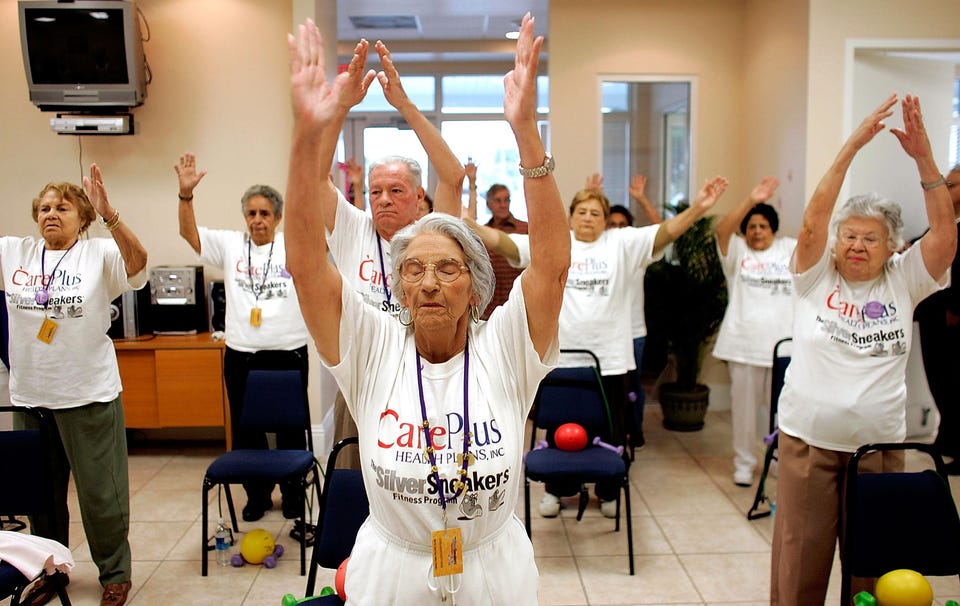Three Overlooked Tax Deductions For Seniors You Don’t Want To Miss


MIAMI – MARCH 22: Concepcion Cartaya (C) stretches as she listens to an exercise instructor lead … [+] their class during a work out at the CAC-Florida medical center March 22, 2007 in Miami, Florida. The center, formerly the Clinica Asociacion Cubana and now owned by Humana, provides seniors with regular primary care physicians and access to specialists several times a week. The center, emphasizing its Cuban approach, provides a place not only where health care is provided, but a kind of meeting place for the community where patients can be found playing card games, exercising, enjoying refreshments and participating in bingo tournaments and other events. (Photo by Joe Raedle/Getty Images)
Getty Images
Some people would say there’s not a lot to like about getting older, but federal lawmakers have seen to it that seniors get some nice tax breaks. Here are three tax breaks you should consider and review before you file your return.
A bigger standard deduction
When you turn 65, the IRS provides you with a larger standard deduction. Couples in which one or both spouses are age 65 or older also get bigger standard deductions than younger taxpayers. If only one spouse is 65 or older, the extra amount for 2022 is $1,400 but it climbs to $2,800 if both spouses are 65 or older.
A deduction for Medicare Premiums
If you become self-employed after you leave your job, you can deduct the premiums you pay for Medicare Part B and Part D, plus the cost of supplemental Medicare (Medigap) policies or the cost of a Medicare Advantage plan.This deduction is available even if you don’t itemize and is not subject to the 7.5%-of-Adjusted Gross Income test that applies to itemized medical expenses.

BERLIN, GERMANY – AUGUST 30: An elderly couple embrace while dancing during an afternoon … [+] get-together in the community room of the Sewanstrasse senior care home in Lichtenberg district on August 30, 2011 in Berlin, Germany. The center opens its doors to non-residents every Tuesday, and between 30 and 70 retired people who still live in their own homes in the local neighborhood come to dance and chat over coffee and cake. Today’s afternoon dance is part of Senior Citizens’ Week (Berliner Seniorenwoche), a city initiative meant to highlight activities available for the city’s eldery. Germany is facing significant demographic change that includes elderly citizens making up an increasing portion of the overall population, a situation aggravated by the country’s birth rate, which is the lowest in Europe. The shift will continue to put greater strain on the country’s ability to finance its public health and senior care programs. (Photo by Sean Gallup/Getty Images)
Getty Images
Spousal IRA Contribution
In most cases, you must have earned income to contribute to an IRA. But if you’re married and your spouse is still working, he or she can generally contribute up to $7,000 a year (if you are over 50) to a traditional or Roth IRA that you own. The total combined contributions allowed for the year to your IRA and your spouse’s IRA can’t exceed $13,000 if only one of you is age 50 or older, or $14,000 if both of you are at least 50 years old.
So relish all those candles on your birthday cake – they’re fattening your wallet!
